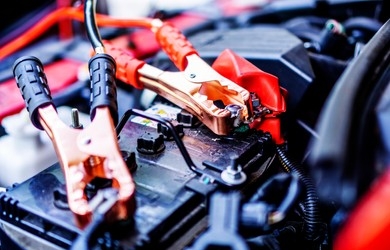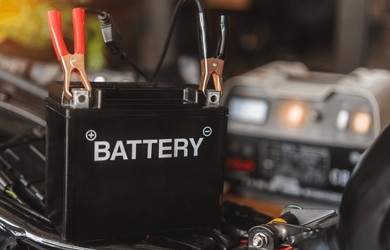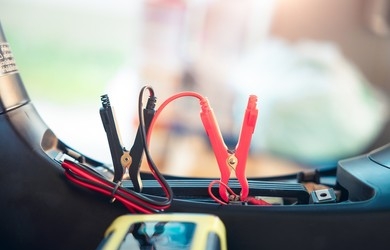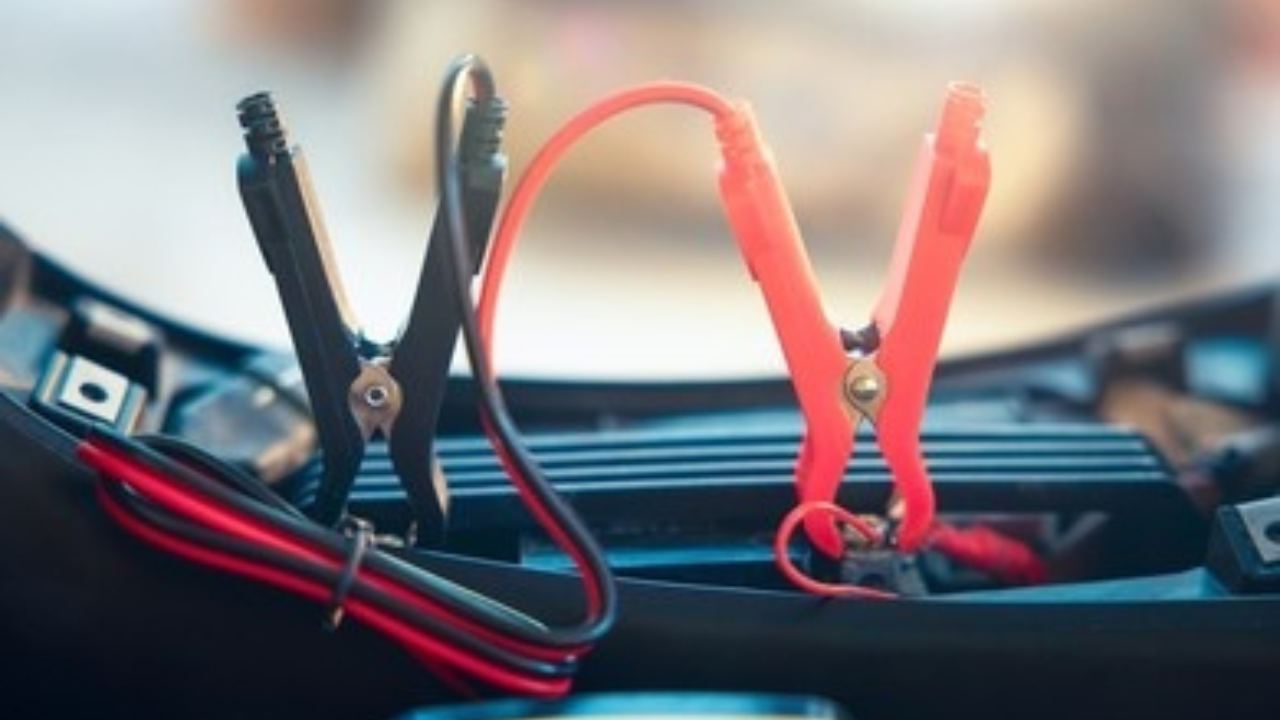Trickle charging a battery in a car is a method of slow charging that maintains the battery’s optimal state. This process gradually adds a low current charge to the battery, ensuring it stays fully powered and extends its lifespan.
It can benefit vehicles that are not driven often or for long periods, as it prevents the battery from losing charge and reduces the risk of damage or failure. Additionally, trickle charging can be done using a dedicated charger or the vehicle’s alternator while driving.
This affordable and effective technique is a simple way to keep your car’s battery in top shape and ready for any journey.

Credit: www.amazon.com
The Importance Of Trickle Charging
Trickle charging is crucial for car batteries as it helps to maintain their charge levels over extended periods. This prevents the battery from deteriorating and ensures it’s always ready to start your vehicle, especially in colder weather. Regular trickle charging can prolong the lifespan of your car battery.
How Trickle Charging Works
Trickle charging is a method by which a low-level current is continuously supplied to a car battery to maintain its charge without overcharging it. When a vehicle is not in use for an extended period, such as during winter storage or when it is parked for a long time, the battery can slowly lose its charge due to various internal factors.
Trickle charging prevents this by delivering a small, constant flow of electricity to the battery, ensuring it remains charged and ready to go when needed.
Benefits Of Trickle Charging
1. Prevents Battery Drain: Trickle charging helps prevent battery drain by continuously topping up the charge, especially in vehicles that aren’t driven frequently. This is particularly crucial for cars with electronic systems that draw little power even when the vehicle is not in use.
2. Extends Battery Life: By keeping the battery charged at all times, trickle charging helps extend its lifespan. When a battery is left discharged for an extended period, it can undergo a process called sulfation, where lead sulfate crystals form on the battery plates, reducing its capacity. Trickle charging prevents sulfation, ensuring your battery lasts longer.
3. Ready-to-Go Convenience: Trickle charging ensures your car battery remains charged and ready to go whenever needed. Instead of the frustration of a dead battery, you can effortlessly start your vehicle and hit the road, saving you time and potential inconvenience.
4. Cost-Effective: Investing in a trickle charger can save you money in the long run. By maintaining the battery’s optimal charge, you can avoid the need for costly battery replacements and the inconvenience of unexpected breakdowns.
5. Environmental Benefits: Trickle charging helps reduce battery waste by extending its life. By keeping your battery in good condition and avoiding premature replacements, you contribute to a more sustainable environment.
In conclusion, trickle charging is a simple yet powerful method to ensure your car battery stays charged, extends its lifespan, and saves you from the inconvenience of unexpected breakdowns. Incorporating this practice into your regular maintenance routine can benefit your wallet and the environment long-term.

Choosing The Right Trickle Charge Battery in Car
When it comes to maintaining your car’s battery life, a trickle charger is an essential tool. It slowly charges your battery and keeps it at optimal levels, preventing it from dying during extended periods of inactivity.
However, choosing a suitable Trickle Charge Battery in a Car can be overwhelming with many options. This blog post will discuss the factors you must consider to make an informed decision. Let’s start by understanding amperage and voltage.
Understanding Amperage And Voltage
Amperage and voltage are crucial factors to understand when choosing a trickle charger. Amperage, measured in amps, refers to the rate at which the charger delivers current to your car battery.
A higher amperage means a faster charging speed but may also increase the risk of damage if not monitored carefully. On the other hand, voltage, measured in volts, refers to the electrical pressure the charger applies to your battery.
When selecting a trickle charger, it is essential to match the amperage rating to the capacity of your car battery. Most batteries have a rating between 40-70 ampere-hours (Ah), and a good rule of thumb is to choose a trickle charger that delivers 10% of the battery’s capacity.
For example, if your car battery has a capacity of 60 Ah, a trickle charger with an amperage rating of 6 amps would be suitable.
Types Of Trickle Chargers
Now that you understand the importance of amperage and voltage let’s explore the different types of trickle chargers available:
- Fully Automatic Trickle Chargers: These are user-friendly and often come with built-in features such as automatic shut-off when the battery is fully charged. They are convenient for long-term battery maintenance and are suitable for beginners.
- Maintainer Trickle Chargers: These chargers are designed to keep your battery at a specific voltage without overcharging it. They are ideal for vehicles not frequently used or in storage.
- Desulfating Trickle Chargers: These chargers are designed to remove sulfation from batteries. Sulfation is a common cause of battery failure and decreases its capacity. Desulfating chargers can help revive weakened batteries.
- Solar Trickle Chargers: These chargers utilize solar panels to convert sunlight into electrical energy. They are eco-friendly and perfect for maintaining your battery’s charge while your car is parked outdoors.
Choosing the suitable trickle charger depends on your needs and battery type. Consider factors such as amperage, voltage compatibility, and charger type before deciding. With the proper trickle charger, you can ensure your car battery remains healthy and ready to perform whenever needed.

Step-by-step Trickle Charging Process
If you want to ensure that your car’s battery stays charged, especially during extended periods of inactivity, using a trickle charger can be an effective solution.
The step-by-step trickle charging process involves preparing the battery for trickle charging and connecting and monitoring the trickle charger. Here’s a guide to help you through the process.
Preparing The Battery For Trickle Charging
Before starting the trickle charging process, preparing the battery to ensure optimal results is essential. Here are the key steps:
- Clean the battery terminals: Use baking soda and water to clean the terminals and remove any corrosion or buildup.
- Inspect the battery: Check for any signs of damage or leaks that may indicate the need for professional attention.
- Disconnect the battery: Disconnect from the vehicle to avoid any potential electrical issues during the trickle charging.
Connecting And Monitoring The Trickle Charger
Once the battery is prepared, you can connect the trickle charger and monitor the charging process. Follow these steps:
- Choose a suitable location: Select a well-ventilated, flat surface to set up the trickle charger.
- Connect the charger: Attach the positive (red) clamp to the positive terminal of the battery and the negative (black) clamp to the negative terminal.
- Set the charging parameters: Follow the manufacturer’s instructions to set the appropriate voltage and current for trickle charging.
- Monitor the charging process: Regularly check the charger’s indicators and the battery’s temperature to ensure everything functions as intended.
By following these steps, you can effectively initiate the trickle charging process for your car’s battery, helping to maintain its performance and longevity.
Common Mistakes To Avoid
To extend the life of your car battery and ensure it remains functional, it’s essential to understand the common mistakes that could occur when trickle charging. You can ensure your battery’s optimal performance and longevity by avoiding these mistakes.
Overcharging The Battery
Overcharging the battery can lead to significant damage and decreased battery life. It’s essential to consider the manufacturer’s recommendations and avoid leaving the battery connected to the charger longer than necessary.
Continuous overcharging can cause the battery to overheat, potentially leading to electrolyte loss or even an explosion. Always use a charger with automatic shut-off capabilities to prevent overcharging, or set a timer to remind you to disconnect the charger once the battery is fully charged.
Using Incorrect Trickle Charging Settings
Using incorrect trickle charging settings can also negatively affect the battery. Selecting the appropriate charging voltage and current settings is crucial based on the battery type. Each battery has unique charging requirements, and incorrect settings can lead to undercharging or overcharging.
Consult the battery manufacturer’s guidelines or seek professional advice to ensure you are using the appropriate trickle charging settings.
Practical Tips For Optimizing Battery Performance
Regular maintenance practices and maximizing the lifespan of car batteries are essential for keeping your vehicle running smoothly.
By following a few simple steps and incorporating these practical tips into your routine, you can ensure that the trickle charge battery in your car performs optimally for years to come.
Regular Maintenance Practices
Maintaining your car battery is crucial for preventing unexpected breakdowns and extending lifespan. Here are some regular maintenance practices to keep in mind:
- Perform regular inspections: Check your battery for any signs of corrosion, damage, or loose connections. Clean the terminals regularly using a solution of baking soda and water to remove any accumulated residue.
- Keep it secure: Ensure the battery is fastened to minimize driving vibrations. This can prevent internal damage and premature battery failure.
- Test the voltage: Use a multimeter to measure the voltage of your battery periodically. This will indicate its overall health and allow you to take necessary action if the voltage is lower than usual.
Maximizing The Lifespan Of Car Batteries
To get the most out of your car battery and maximize its lifespan, consider these tips:
- Avoid frequent short trips: Short trips don’t allow your battery enough time to fully charge, which can lead to a gradual loss of capacity. Combine short trips or longer drives to allow your battery to recharge properly.
- Maintain proper charge levels: Avoid draining your battery excessively by minimizing the use of electronic accessories when the engine is off. This reduces strain on the battery and helps preserve its charge.
- Store your vehicle correctly: If your car will be unused for an extended period, consider disconnecting the battery or investing in a trickle charger. These devices provide a consistent low-level charge, keeping your battery up and ready for use.
By implementing these practical tips and prioritizing battery maintenance, you optimize the performance of your trickle charge battery in the car and save yourself from the inconvenience and expenses of unexpected battery failures.
Will a trickle charger charge a dead battery?
A trickle charger can effectively charge a dead or deeply discharged battery, but it might take time. Trickle chargers are designed to deliver a low, steady current over an extended period, typically at a rate of 1 to 2 amps.
This slow charging process is suitable for maintaining a fully charged battery over time and preventing it from discharging in storage.
Here are some steps you can take when using a trickle charger to revive a dead battery:
- Safety Precautions:
- Ensure you are working in a well-ventilated area and follow safety guidelines provided by the charger’s manufacturer.
- Connect the Charger:
- Connect the positive (red) lead from the charger to the positive terminal on the battery and the negative (black) lead to the negative terminal. Ensure a good and secure connection.
- Set the Charger:
- Set the charger to the appropriate voltage for your battery (typically 6V or 12V, depending on your vehicle). Some chargers may have a specific mode for charging deeply discharged batteries.
- Charging Time:
- Expect the charging process to take considerable time, especially if the battery is severely discharged. The battery could take several hours or even overnight to reach a sufficient charge level.
- Monitor the Charge:
- Regularly check the battery and monitor the charging progress. Disconnect the charger once the battery is sufficiently charged.
It’s important to note that trickle charging is slow, and highly discharged batteries may require a faster initial charge before transitioning to a trickle charge. If the battery fails to respond to the trickle charger, it may be too profoundly discharged or have internal damage, and professional assistance may be needed.
If you have access to an intelligent charger, it can be a more advanced and convenient option. Smart chargers often have features like desulfation modes and automatic adjustments based on battery condition, optimizing the charging process.
If your attempts to charge the dead battery are unsuccessful or don’t hold a charge, it may be time to consider replacing the battery, especially if it’s old or has other signs of wear.

Can I trickle charge a battery without disconnecting it
Yes, you can trickle charge a battery without disconnecting it from the vehicle. Trickle chargers are designed to deliver a low, steady current to the battery over an extended period, and they are generally safe to use while the battery remains connected to the vehicle’s electrical system.
Here are the steps to trickle charge a battery without disconnecting it:
- Safety Precautions:
- Ensure you are working in a well-ventilated area and follow safety guidelines provided by the charger’s manufacturer.
- Select the Right Charger:
- Use a trickle charger that is suitable for the battery’s voltage (6V or 12V) and has an appropriate charging rate. Trickle chargers typically operate at a low amperage, usually around 1 to 2 amps.
- Connect the Charger:
- Connect the positive (red) lead from the charger to the positive terminal on the battery and the negative (black) lead to the negative terminal. Ensure a good and secure connection.
- Set the Charger:
- Set the charger to the appropriate voltage for your battery.
- Charging Time:
- Trickle charging is a slow process, and it may take several hours or even overnight for the battery to reach a sufficient charge level. Monitor the charging progress.
- Check the Battery:
- Regularly check the battery and ensure it is not overheating during charging. Disconnect the charger once the battery is sufficiently charged.
While trickle charging is generally safe for batteries that remain connected to the vehicle, exercising caution and monitoring the charging process is essential. If you have any concerns about the battery’s condition or ability to hold a charge, it may be prudent to consult a professional mechanic.
Remember that certain modern vehicles with advanced electronics may have specific procedures for battery maintenance. Refer to your vehicle’s manual or consult the manufacturer for specific recommendations regarding charging or maintaining the battery.
How long to trickle charge a car battery
The time it takes to trickle charge a car battery depends on various factors, including the battery’s state of charge, capacity, and the amperage of the trickle charger. Trickle chargers typically operate at a low amperage, usually around 1 to 2 amps.
As a general guideline, it might take 12 to 24 hours or even longer to fully charge a car battery with a trickle charger. Here are some factors to consider:
- Battery State of Charge:
- If the battery is deeply discharged, it will take longer to charge than a battery with a higher initial state of charge.
- Battery Capacity:
- The battery’s capacity, measured in ampere-hours (Ah), affects the charging time. A higher-capacity battery will take longer to charge.
- Charger Amperage:
- The amperage rating of the trickle charger plays a significant role. A charger with a higher amperage will charge the battery faster. However, most trickle chargers operate at a low amperage to provide a gentle maintenance charge.
- Battery Condition:
- The overall condition of the battery also influences the charging time. If the battery is in good condition, it may charge more efficiently.
- Environmental Conditions:
- Temperature can impact the charging process. In colder temperatures, charging may take longer.
- Charging Method:
- Some modern chargers, often called “smart chargers,” may have features like desulfation modes or automatic adjustments based on the battery’s condition. These features can optimize the charging process.
You can use a battery voltage tester or a multimeter to determine the battery’s charge state. A fully charged 12-volt lead-acid battery typically measures around 12.6 to 12.8 volts.
Monitor the charging process regularly and disconnect the trickle charger once the battery reaches a sufficient charge level. Overcharging a battery can lead to electrolyte loss and other issues.
If the battery does not seem to be holding a charge or you encounter any difficulties during the charging process, it’s advisable to consult a professional mechanic for further assistance.
Frequently Asked Questions For Trickle Charge Battery In Car
How Does Trickle Charging Work For Car Batteries?
Trickle charging is a slow, steady process that replenishes battery charge by providing a low, constant current. It helps maintain battery health by preventing self-discharge and sulfation, ensuring longer battery life and better starting power.
What Are The Benefits Of Trickle Charging A Car Battery?
Trickle charging offers several advantages, including preventing battery degradation, maintaining optimal charge levels, and prolonging battery life. It benefits vehicles in storage, infrequently used cars and cold weather conditions.
Can I Use A Regular Charger For Trickle Charging My Car Battery?
While regular chargers can be used for trickle charging, it is recommended to use a specialized trickle charger. Trickle chargers provide a lower, consistent charge and have safeguards to prevent overcharging. They are designed specifically for long-term battery maintenance.
How Long Does It Take To Trickle Charge A Car Battery Fully?
The time required for trickle-charging a car battery can vary based on battery capacity, charge level, and charger specifications. Generally, a trickle charger can take several hours or even days to fully charge a car battery, operating at a lower current to ensure battery longevity.
Can you trickle charge a battery still in the car?
Yes, you can trickle charge a battery while it’s still in the car, but following safety precautions and manufacturer guidelines is essential. Disconnect the negative terminal first and ensure proper ventilation during the charging process.
Is trickle charging good for car battery?
Yes, trickle charging is suitable for a car battery as it helps maintain its charge and prolong its lifespan by preventing deep discharge.
Can you trickle charge a car battery without disconnecting it?
Disconnecting the car battery before trickle charging is generally recommended for safety reasons. However, some modern trickle chargers are designed to be safe for use without disconnecting the battery. Always follow the manufacturer’s instructions and guidelines to ensure proper and safe charging.
How long should you trickle charge a car battery?
Trickle charging a car battery typically takes around 24 hours or longer, depending on the battery’s capacity and discharge level.
Can I trickle charge a 12v battery while using it?
Trickle-charging a 12V battery while using it is not recommended due to safety concerns. It’s best to disconnect the battery before trickle charging.
Conclusion
Understanding how to trickle charge a car battery can significantly improve its lifespan and performance. Utilizing a trickle charger ensures that your car battery remains optimal, ready to power your vehicle when needed. With proper maintenance, you can avoid the inconvenience of a dead battery and extend the life of your car battery.

I am a Mahdi . I have four two of experience in Technology and all types of Battery’s like Solar Battery, Car Battery, Lithium Battery etc. So I work on solving these issues and give various tips on these issues.
